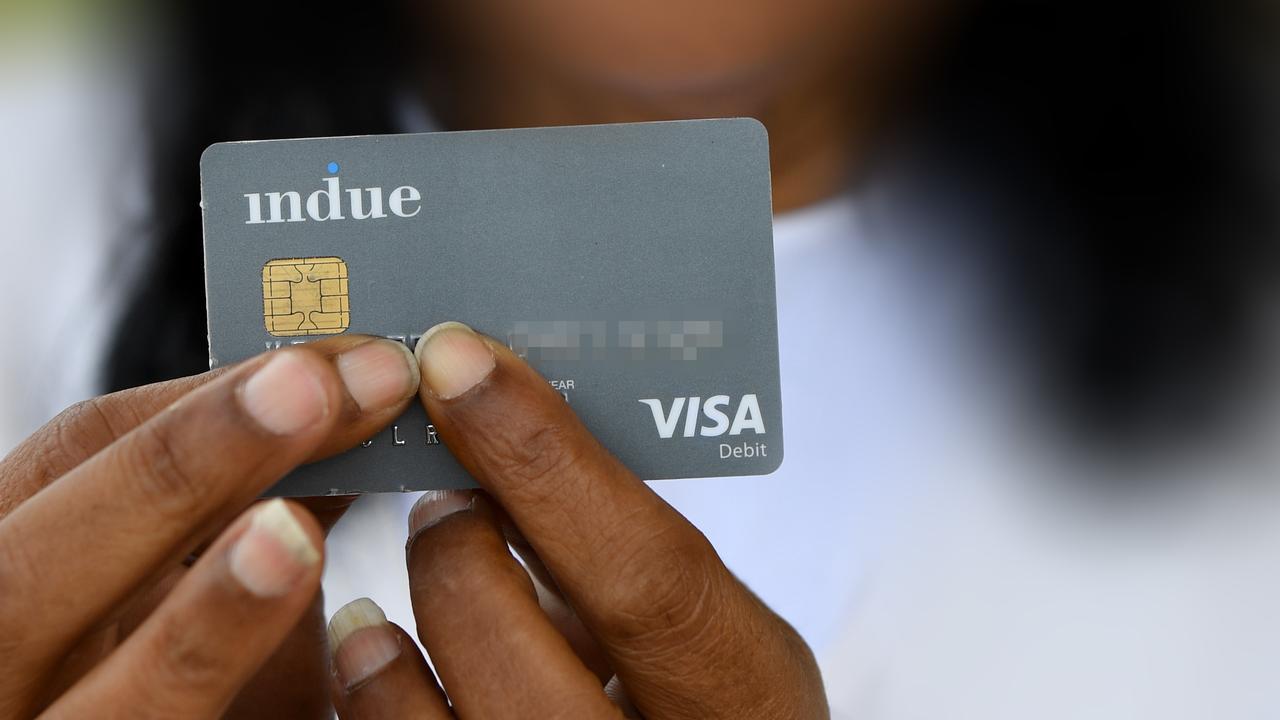Introduction
Cashless policy has become a prominent topic in today’s digital era, revolutionizing the way we carry out financial transactions. With the advancement of technology and the increasing popularity of online shopping and digital payments, many countries have implemented cashless policies to encourage a shift towards electronic payments. This article aims to provide a comprehensive overview of what cashless policy is all about and its implications on businesses and the economy.
Cashless policy refers to a set of regulations and initiatives implemented by governments or financial institutions to promote electronic forms of payment and reduce reliance on physical cash. It involves encouraging the use of digital payment alternatives such as credit cards, debit cards, mobile wallets, and online banking, replacing traditional cash transactions.
The primary purpose of implementing a cashless policy is to create a more efficient, transparent, and secure payment ecosystem. By reducing the reliance on physical cash, governments aim to streamline transactions, combat corruption, minimize tax evasion, and foster economic growth. Additionally, cashless transactions offer convenience, speed, and a seamless user experience, making financial transactions more accessible to individuals and businesses.
There are numerous benefits associated with the adoption of cashless policies. First and foremost, it promotes financial inclusion by providing access to digital payment options for individuals who may not have access to traditional banking services. It also leads to increased transparency and accountability as all transactions are recorded digitally, making it easier to track and monitor financial activities.
From a business perspective, the implementation of cashless policies can significantly enhance operational efficiency. With cashless transactions, businesses no longer need to spend resources on cash handling, counting, and security measures. Furthermore, accepting digital payments allows businesses to expand their customer base by catering to the growing number of consumers who prefer digital payment methods.
There are various types of cashless transactions, each offering distinct advantages and convenience to users. These include mobile payments using smartphones, contactless payments using near field communication (NFC) technology, online payments through e-commerce platforms, and electronic fund transfers through banking channels.
However, the implementation of cashless policies also presents its fair share of challenges. Many businesses, especially small and medium enterprises, may face difficulties in adapting to digital payment systems due to limited resources or lack of technical expertise. Additionally, there may be concerns related to privacy and data security, as digital transactions involve the exchange of personal and financial information.
Definition of Cashless Policy
A cashless policy is a governmental or institutional strategy aimed at promoting and encouraging the use of electronic payment systems in lieu of cash for financial transactions. It involves setting regulations and initiatives to reduce the reliance on physical currency by encouraging individuals and businesses to adopt digital payment alternatives, such as credit and debit cards, mobile wallets, and online banking.
The main objective of a cashless policy is to create a more efficient, transparent, and secure payment ecosystem. By reducing cash transactions, governments aim to streamline financial activities, minimize tax evasion and corruption, and foster economic growth. Cashless policies are often driven by the desire to promote financial inclusion, enhancing accessibility to financial services, particularly for the marginalized and unbanked population.
One of the key aspects of a cashless policy is the transition from physical cash to digital payment mechanisms. This shift can be facilitated through various means, such as providing incentives for electronic payments, promoting the use of digital wallets, implementing contactless payment technologies, and mandating the acceptance of electronic payments by businesses.
To effectively implement a cashless policy, governments collaborate with financial institutions, technology providers, and other relevant stakeholders. They work together to create the necessary infrastructure, such as secure payment networks, card terminals, and online payment gateways. Education and awareness campaigns are also vital to inform the public about the benefits and usage of electronic payment systems.
It is important to note that a cashless policy does not seek to completely eliminate the use of cash. Rather, its aim is to reduce the reliance on cash transactions and provide individuals and businesses with diverse and convenient payment options. Cash remains an essential medium of exchange, particularly in situations where digital payment systems may not be accessible or reliable.
While the specifics of cashless policies may vary from country to country, the common goal remains the same – to create a more efficient, transparent, and inclusive financial system. By embracing electronic payment methods, governments and institutions strive to modernize their economies and adapt to the evolving financial landscape.
Purpose of Cashless Policy
The purpose of implementing a cashless policy is to achieve several key objectives that benefit both individuals and the economy as a whole. These objectives are aimed at creating a more efficient, transparent, and secure payment ecosystem, while fostering financial inclusion and economic growth.
One of the primary purposes of a cashless policy is to streamline financial transactions. By encouraging the use of electronic payment systems, governments aim to minimize the inefficiencies associated with cash transactions, such as the need for manual counting, handling, and storage of physical currency. This leads to faster and more efficient payments, saving both time and resources for businesses and individuals alike.
Another important purpose of a cashless policy is to combat corruption and reduce tax evasion. Cash transactions are often more susceptible to illicit activities, as they can be anonymously conducted and leave little to no trace. By promoting electronic payment systems, governments can enhance transparency and accountability in financial transactions, making it easier to track and monitor financial activities. This helps in curbing corruption and tax evasion, ultimately strengthening the overall integrity of the financial system.
Financial inclusion is also a significant objective of cashless policies. Many individuals, particularly those in rural or disadvantaged areas, may have limited access to traditional banking services. By encouraging the adoption of electronic payment systems, governments aim to provide individuals with greater access to financial products and services. This helps to bridge the gap between the banked and unbanked population, empowering individuals with the ability to participate more fully in the formal economy.
Furthermore, a cashless policy can lead to increased economic growth. The digitization of payments promotes the growth of digital infrastructure and the development of financial technology within a country. This, in turn, stimulates economic activities and encourages innovation in the financial sector. By embracing cashless transactions, countries can attract investments, improve their competitiveness, and drive financial inclusivity, resulting in overall economic development.
Additionally, a cashless policy offers convenience and efficiency for both consumers and businesses. With electronic payment systems, individuals can make transactions anytime, anywhere, without the need for physical cash. For businesses, accepting digital payments expands their customer base and enables them to cater to the growing number of consumers who prefer cashless transactions. This ultimately leads to greater customer satisfaction, increased sales, and enhanced business efficiency.
In summary, the purpose of a cashless policy is to create a more efficient, transparent, and inclusive financial system. By encouraging the adoption of electronic payment systems, governments aim to streamline financial transactions, combat corruption and tax evasion, promote financial inclusion, stimulate economic growth, and enhance convenience for both individuals and businesses.
Benefits of Cashless Policy
The implementation of a cashless policy brings forth a wide range of benefits for individuals, businesses, and the overall economy. These benefits are a result of the efficiency, convenience, transparency, and security that cashless transactions offer.
One of the significant benefits of a cashless policy is the enhanced convenience it provides to individuals. With electronic payment systems, individuals no longer need to carry large amounts of cash or worry about finding exact change. Payments can be made seamlessly through credit or debit cards, mobile wallets, or online banking platforms, allowing for quick and hassle-free transactions.
Another advantage of cashless transactions is increased transaction speed. Unlike cash transactions that often require manual counting and verification, electronic payments are processed in seconds, saving valuable time for both consumers and businesses. This speed is particularly beneficial in situations where prompt payments are essential, such as in retail stores, restaurants, and public transportation systems.
Cashless transactions also offer an added layer of security. Physical cash is vulnerable to theft or loss, and if misplaced, it cannot be easily recovered. On the other hand, electronic payment systems provide secure and traceable transactions. Encryption and authentication mechanisms protect personal and financial data, reducing the risk of fraud. Additionally, digital records of transactions make it easier to track, monitor, and resolve any disputes or discrepancies.
Financial inclusion is another significant benefit of a cashless policy. By embracing electronic payment systems, individuals who do not have access to traditional banking services can participate in the formal economy. Mobile-based banking, digital wallets, and other fintech innovations allow people to store, transfer, and manage their money more conveniently and securely. This helps to bridge the gap between the banked and unbanked population, promoting financial literacy and empowering individuals to better manage their finances.
Cashless transactions also have a positive impact on businesses. Accepting electronic payments expands customer reach and provides businesses with opportunities to tap into the growing base of consumers who prefer cashless transactions. This, in turn, leads to increased sales and revenue. Additionally, the digitization of payments reduces the reliance on physical cash handling, saving businesses time and resources that can be utilized for more productive activities.
From a macroeconomic perspective, a cashless policy can have profound effects on the overall economy. By reducing the circulation of physical cash, there is a decrease in the costs associated with cash production, storage, and distribution. Governments can reallocate these resources towards more productive investments, such as infrastructure development or social welfare programs. Moreover, the increased transparency and traceability of electronic transactions contribute to a more accountable and efficient tax collection system, generating additional revenue for governments.
In summary, the benefits of a cashless policy include enhanced convenience, faster transactions, increased security, financial inclusion, business growth opportunities, and economic efficiency. By embracing electronic payment systems, individuals and businesses can enjoy the advantages of a streamlined, secure, and transparent financial ecosystem.
Types of Cashless Transactions
Cashless transactions encompass a variety of digital payment methods that allow individuals and businesses to conduct financial transactions without the use of physical cash. These methods provide convenience, security, and efficiency in conducting transactions, catering to the diverse needs of users in different contexts. Here are some of the most common types of cashless transactions:
- Card-Based Payments: This type of cashless transaction involves using credit or debit cards to make payments. Card-based payments have gained significant popularity and acceptance worldwide. When making a purchase, the cardholder simply needs to swipe or insert the card into a card reader at the point of sale (POS) terminal, and the payment is deducted electronically from their bank account or credit line. This method offers convenience and accessibility, as it can be used both in physical stores and online.
- Mobile Payments: With the widespread use of smartphones, mobile payment solutions have become increasingly popular. Mobile payment apps allow users to link their bank accounts or credit cards to their mobile devices. They can then make payments by scanning QR codes or tapping their phones on contactless payment terminals. Mobile payments offer convenience and flexibility, as individuals can make transactions anytime and anywhere using their smartphones.
- Contactless Payments: Contactless payment technology enables individuals to make transactions by simply tapping their payment card, smartphone, or wearable device on a compatible payment terminal. This technology uses radio frequency identification (RFID) or near field communication (NFC) technology to transmit payment information securely and quickly. Contactless payments are known for their speed and convenience, as they eliminate the need for physical contact or swiping of cards.
- Online Payments: Online payments refer to transactions conducted over the internet, usually through e-commerce platforms. Individuals can make online purchases using their credit cards, debit cards, or online payment systems like PayPal, Venmo, or Amazon Pay. Online payments offer convenience, as users can shop from the comfort of their homes and have their purchases delivered to their doorstep.
- Peer-to-Peer (P2P) Payments: P2P payments allow individuals to transfer money electronically to each other, often using mobile apps or online banking platforms. These transactions enable individuals to split bills, repay friends or family, or make payments to freelancers or service providers. P2P payments offer convenience and speed, eliminating the need for cash or checks.
- Electronic Fund Transfers (EFT): Electronic fund transfers involve transferring money from one bank account to another electronically. EFT transactions can be initiated through online banking platforms, mobile banking apps, or wire transfer services. This method is commonly used by businesses to pay suppliers or employees and by individuals for bill payments or sending money to family and friends.
These are just a few examples of the various types of cashless transactions available today. The popularity and availability of each method may vary depending on factors such as geographic location, technological infrastructure, and consumer preferences. As technology continues to advance, new and innovative cashless payment methods are expected to emerge, further transforming the way individuals and businesses conduct financial transactions.
How Cashless Policy Affects Businesses
The implementation of a cashless policy can have a significant impact on businesses of all sizes, transforming the way they accept payments and conduct financial transactions. Here are some key ways in which cashless policy affects businesses:
Increased Sales Opportunities: Cashless policies provide businesses with the opportunity to tap into a growing segment of consumers who prefer digital payment methods. By accepting a variety of electronic payment options, businesses can attract a larger customer base, increase customer satisfaction, and ultimately boost sales. Additionally, electronic payments enable businesses to participate in e-commerce and expand their reach beyond physical storefronts.
Efficiency and Cost Savings: Cash transactions come with various costs and operational inefficiencies. Storing, counting, and securely handling cash requires resources and manpower. By transitioning to digital payment systems, businesses can streamline their operations, reduce the need for cash handling, and save on associated costs, such as cash processing fees and cash handling equipment. This increases efficiency and allows businesses to allocate their resources to more productive activities.
Improved Cash Flow Management: Electronic transactions provide businesses with real-time, accurate, and transparent records of their financial transactions. This enables business owners to have better visibility and control over their cash flow. Access to instant transaction data allows businesses to analyze and optimize their revenue streams, manage inventory effectively, and make informed financial decisions.
Enhanced Customer Experience: Cashless transactions offer convenience, speed, and a seamless checkout experience for customers. By providing various digital payment options, businesses can offer a frictionless payment process, reducing queues and wait times. This improves overall customer satisfaction and encourages repeat business.
Reduced Security Risks: Handling and storing large amounts of cash can expose businesses to security risks, such as theft, counterfeit currency, and employee fraud. Electronic transactions, on the other hand, provide a more secure alternative. Funds are transferred digitally, eliminating the risk of physical cash being lost or stolen. Additionally, electronic payment systems often have built-in security features and encryption, making transactions more secure and reducing the chances of fraud.
Access to Data for Marketing and Insights: Digital payment systems generate valuable data that can be used by businesses for marketing and customer insights. With permission from customers, businesses can analyze transaction data to understand consumer behavior, preferences, and spending patterns. This information can help businesses tailor their marketing strategies, personalize customer experiences, and make data-driven business decisions.
Adaptation and Innovation: Embracing cashless policies pushes businesses to adapt to new technologies and payment systems. This fosters innovation and drives the adoption of emerging digital payment solutions. By staying up-to-date with the latest payment trends, businesses can keep pace with changing consumer preferences and remain competitive in the market.
While there are numerous benefits for businesses in adopting cashless policies, it is important for businesses to also consider the challenges and costs associated with transitioning to digital payment systems. These challenges may include initial setup costs, the need for training employees on new payment technology, and ensuring the security and privacy of customer data.
In summary, cashless policies affect businesses by opening up new sales opportunities, improving efficiency and cost savings, enhancing customer experiences, reducing security risks, providing access to valuable data, and fostering adaptation and innovation. By embracing digital payment methods, businesses can adapt to the evolving financial landscape and meet the changing needs and preferences of their customers.
Challenges of Implementing Cashless Policy
While cashless policies offer numerous benefits, their implementation can also present certain challenges. These challenges can vary depending on the specific context and the level of readiness within a country or region. Here are some common challenges associated with implementing a cashless policy:
Infrastructure and Technological Readiness: One of the key challenges is the need for robust technological infrastructure to support cashless transactions. This includes the availability of stable and secure internet connectivity, sufficient point-of-sale (POS) terminals, mobile devices capable of supporting digital payment apps, and reliable payment networks. In areas with inadequate infrastructure, especially in rural or remote regions, the lack of technological readiness poses a significant challenge to the widespread adoption of cashless transactions.
Educating and Training Stakeholders: The successful implementation of a cashless policy requires educating and training individuals, businesses, and government officials about the benefits and usage of digital payment systems. Many people may be hesitant or unfamiliar with electronic payment methods, and may require guidance on how to use them effectively. Educating stakeholders about the security aspects of cashless transactions is also crucial to build trust and confidence in the system.
Ensuring Accessibility and Inclusion: While cashless policies aim to promote financial inclusion, it is important to ensure that vulnerable groups, such as the elderly, low-income individuals, and those without access to digital devices or bank accounts, are not excluded from participating in the cashless ecosystem. Efforts should be made to make digital payment services accessible to all, by providing alternative options and supporting initiatives that bridge the digital divide.
Security and Fraud Risks: With the increase in digital transactions, there is an increased risk of cybersecurity threats and fraud. Data breaches, identity theft, and unauthorized transactions are concerns that need to be addressed to maintain consumer trust in the cashless system. Robust security measures, including encryption protocols, authentication mechanisms, and continuous monitoring of the payment infrastructure, are essential to mitigate these risks.
Resistance to Change and Cash Dependence: Despite the benefits, some individuals and businesses may be resistant to the idea of transitioning to cashless transactions. This resistance can be due to various factors, including a lack of trust in digital payment systems, cultural preferences for cash, or a preference for traditional or informal financial practices. Addressing these concerns and fostering a positive perception of cashless transactions through awareness campaigns and education is necessary to encourage adoption.
Regulatory and Legal Frameworks: A comprehensive regulatory and legal framework is vital to govern and supervise cashless transactions effectively. This framework should address issues related to consumer protection, privacy, fraud prevention, and dispute resolution. Ensuring compliance with regulatory requirements and establishing regulatory bodies to oversee the implementation of cashless policies can be a complex task, particularly in multi-stakeholder environments.
Costs and Affordability: Implementing and maintaining the infrastructure required for cashless transactions can be costly, especially for small businesses or businesses operating in low-income areas. Costs may include equipment expenses, transaction fees, and software integration costs. Finding solutions to reduce the financial burden for small businesses and ensuring that fees associated with electronic payment systems are manageable for all stakeholders is crucial.
Overcoming these challenges requires collaborative efforts between governments, financial institutions, businesses, and the public. By addressing these challenges, cashless policies can be successfully implemented, leading to a more efficient, inclusive, and secure financial ecosystem.
Security Concerns in Cashless Transactions
While cashless transactions offer convenience and efficiency, they also come with certain security concerns that need to be addressed to ensure the trust and confidence of users. Here are some key security concerns associated with cashless transactions:
Data Breaches and Privacy: Cashless transactions involve the exchange of personal and financial information. The security of this data is paramount to protect users from identity theft, fraud, and unauthorized access. Data breaches can result in the loss of sensitive information and have serious implications for individuals and businesses. Hence, robust data encryption, secure transmission channels, and strict privacy policies are essential to safeguard user data and maintain confidentiality.
Phishing and Social Engineering: Phishing attacks and social engineering techniques are employed by cybercriminals to trick individuals into revealing their confidential information, such as account credentials or card details. Common methods include deceptive emails, fake websites, or fraudulent phone calls. Educating individuals about these risks and promoting awareness of safe browsing habits and the importance of not sharing personal information are crucial in mitigating this security concern. Additionally, implementing multi-factor authentication can provide an extra layer of security.
Payment Card Skimming: Payment card skimming involves the unauthorized capture of card information, usually through the use of hidden devices or tampered card readers at point-of-sale terminals or ATMs. This information is then used to make fraudulent transactions. To combat this concern, businesses and financial institutions should regularly inspect and maintain their payment card terminals, employ tamper-resistant hardware, and encourage customers to be vigilant and report any suspicious activities.
Malware and Ransomware: Malicious software, such as malware and ransomware, poses a significant threat to cashless transactions. Malware can be designed to steal sensitive information or take control of devices, while ransomware can encrypt valuable data and demand payment for its release. Employing robust antivirus software, keeping software and devices up to date, and regularly backing up data can help mitigate the risk of malware and ransomware attacks.
Contactless Payment Risks: Contactless payment technology offers convenience but also raises concerns about unauthorized transactions. The proximity-based nature of contactless payments means that malicious individuals equipped with specialized devices can potentially intercept payment information. However, the payment card industry has implemented security measures, such as transaction limits and dynamic card verification values, to minimize these risks. Consumers are also encouraged to enable transaction notifications and promptly report any unauthorized transactions to their financial institutions.
Social Implications: Cashless transactions may exacerbate the digital divide by excluding individuals without access to digital devices or internet connectivity. Additionally, relying solely on digital payments can create dependency on technology and financial exclusion for individuals with limited technological literacy. It is crucial to address these social implications by ensuring accessibility, providing options for individuals without digital capabilities, and promoting financial and digital literacy programs.
To mitigate these security concerns, collaboration between policymakers, financial institutions, and technology providers is crucial. Implementing robust security measures, fostering awareness and education on safe online practices, and continuously monitoring and updating security protocols are essential to ensure the integrity and safety of cashless transactions.
Ultimately, by addressing these security concerns, individuals and businesses can confidently embrace cashless transactions and benefit from the convenience and efficiency they offer.
Cashless Policies around the World
Countries around the world have been adopting cashless policies to promote digital payment alternatives and reduce the dependency on physical cash. While the specifics of these policies may vary, the common goal is to create a more efficient, transparent, and inclusive financial ecosystem. Here are some examples of cashless policies implemented in various countries:
Sweden: Sweden is known for its advanced cashless society, with a significant shift away from cash transactions in recent years. The country has seen a rise in mobile payment solutions and widespread acceptance of card-based payments. Many businesses, including restaurants and retailers, no longer accept cash, and even public transportation operates predominantly on cashless systems.
China: China has seen a rapid growth in cashless payments, primarily driven by mobile payment apps such as Alipay and WeChat Pay. These apps allow users to make payments using their smartphones by scanning QR codes. Cashless payments are widely accepted in various settings, from street vendors to high-end establishments. The popularity of mobile payments in China has significantly reduced the use of cash in everyday transactions.
Kenya: In Kenya, mobile money services, such as M-Pesa, have revolutionized financial transactions. The widespread adoption of mobile money has provided financial services to unbanked individuals, allowing them to transfer money, pay bills, and make purchases conveniently using their mobile phones. Mobile money has played a crucial role in promoting financial inclusion and driving economic growth in the country.
India: India implemented the demonetization policy in 2016, which aimed to reduce the circulation of high-value currency notes and promote digital transactions. As a result, there was a significant increase in digital payments, with mobile payment apps like Paytm and BHIM gaining widespread acceptance. The government has also launched initiatives to promote digital wallets and online banking, encouraging the use of cashless transactions across various sectors.
United Kingdom: The UK has been driving the adoption of cashless payments through initiatives like the Contactless Payment Scheme. Contactless payments using debit or credit cards have gained immense popularity in the country, leading to a decline in cash usage. The Transport for London (TfL) has also introduced contactless payment cards for public transportation, making it convenient for commuters to pay their fares digitally.
Singapore: Singapore has been actively promoting cashless transactions through the Smart Nation initiative. The country has implemented a unified QR code system called SGQR, which enables users to make payments using a single QR code across multiple payment apps. This initiative aims to simplify and streamline transactions, making cashless payments more accessible and convenient for businesses and individuals.
Sweden: Another country at the forefront of cashless transactions is Sweden, where a significant decline in cash usage has been witnessed. Many businesses, even small-scale vendors and cafes, only accept card or mobile payments. Several banks in Sweden have stopped offering cash handling services, further driving the shift towards digital payments.
These are just a few examples of cashless policies and initiatives being implemented across different countries. The common theme is the advancement and adoption of digital payment systems to enhance efficiency, transparency, and financial inclusion. As technology evolves and the benefits of cashless transactions become more evident, it is expected that more countries will adopt cashless policies to keep pace with the rapidly changing financial landscape.
Conclusion
Cashless policies have emerged as a prominent response to the digitization of financial transactions, offering numerous benefits and challenges for individuals, businesses, and economies worldwide. These policies aim to improve efficiency, transparency, and financial inclusion by promoting the use of electronic payment systems and reducing reliance on physical cash.
The implementation of cashless policies has resulted in increased convenience, speed, and security in transactions. Individuals and businesses can now make payments seamlessly using credit and debit cards, mobile wallets, and online banking platforms. This shift towards cashless transactions has also opened up new sales opportunities for businesses, expanded financial inclusion, and improved overall customer experiences.
However, there are challenges to overcome in implementing cashless policies. These challenges include ensuring infrastructure and technological readiness, addressing security concerns, providing accessibility and inclusion, overcoming resistance to change, establishing appropriate regulatory frameworks, and considering the affordability of digital payments for all stakeholders.
Despite these challenges, countries around the world are embracing cashless policies and witnessing significant transformations in their financial ecosystems. From Sweden’s advanced cashless society to India’s demonetization policy, various countries have implemented initiatives to drive the adoption of digital payment systems.
Cashless policies are not meant to completely eliminate cash but rather to reduce its usage and provide individuals and businesses with diverse and convenient payment options. By embracing digital payment systems, societies can enjoy the benefits of streamlined financial transactions, increased transparency, improved financial security, and enhanced economic growth.
As technology continues to advance and more people become comfortable with digital payment methods, the cashless landscape will continue to evolve. Governments, policymakers, financial institutions, and businesses must work collaboratively to address the challenges and ensure secure, accessible, and inclusive cashless ecosystems.

























